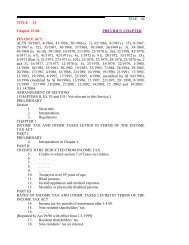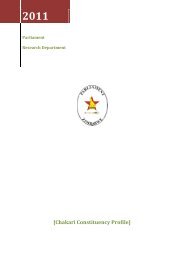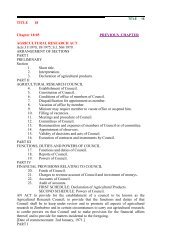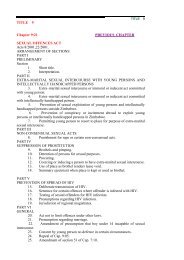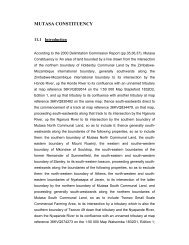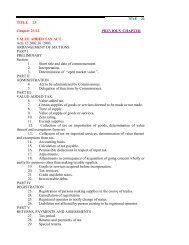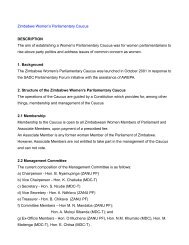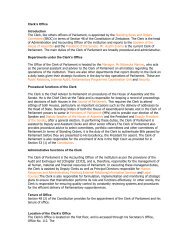Silobela Constituency Profile - Parliament of Zimbabwe
Silobela Constituency Profile - Parliament of Zimbabwe
Silobela Constituency Profile - Parliament of Zimbabwe
Create successful ePaper yourself
Turn your PDF publications into a flip-book with our unique Google optimized e-Paper software.
The graph above shows that the distribution <strong>of</strong> population at constituency level reflects the<br />
provincial demographic distribution <strong>of</strong> more females to males. As shown by the graph below, most<br />
wards have more females to males. All <strong>of</strong> the constituency wards has a population above 1 800<br />
people.<br />
Figure 2: Population Distribution by Ward<br />
Ward 25 has the highest number <strong>of</strong> registered voters while ward 26 has the least. There is a slight<br />
relationship between population distribution and distribution <strong>of</strong> registered voters in the<br />
constituency. A significant drop had been registered in election participation from 21 061 voters in<br />
2005 to 11 544 in 2008.<br />
3.0 Education<br />
3.1 Primary Education<br />
In <strong>Zimbabwe</strong> there are high levels <strong>of</strong> primary school enrolments, net enrolment ratio (NER)<br />
increased from 81.9% in 1994, peaking at 98.5% in 2002. Council schools enrol about 61% <strong>of</strong> the<br />
population whilst government schools are the second largest enroller <strong>of</strong> about 24%. Gender equality<br />
<strong>Silobela</strong> <strong>Constituency</strong> <strong>Pr<strong>of</strong>ile</strong> Page 4



